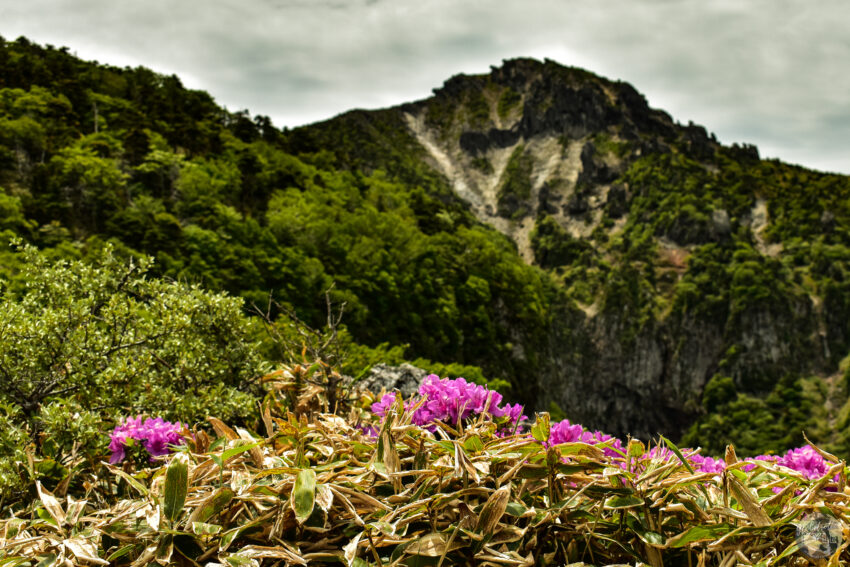If winter in Jeju Island felt like wandering through a dreamscape wrapped in silence and frost, then summer on Jeju is the exact opposite—vibrant, alive, and bursting with color. The sea glimmers under the blazing sun, the air is thick with the scent of tangerine blossoms, and the whole island hums with life.
I first visited Jeju in the dead of winter, bundled up in fleece as I failed to summit Mt Hallasan thanks to a wicked snowstorm that turned me away. But on my second trip—this time in early May—I not only summited, but revealed a different side of the island as well. A side that felt more like the island everyone kept referring to as “the Hawaii of Korea”. So, if you’re wondering what to do on Jeju Island when the sun is out and the island is glowing, then read on!
1. Hike Mt Hallasan
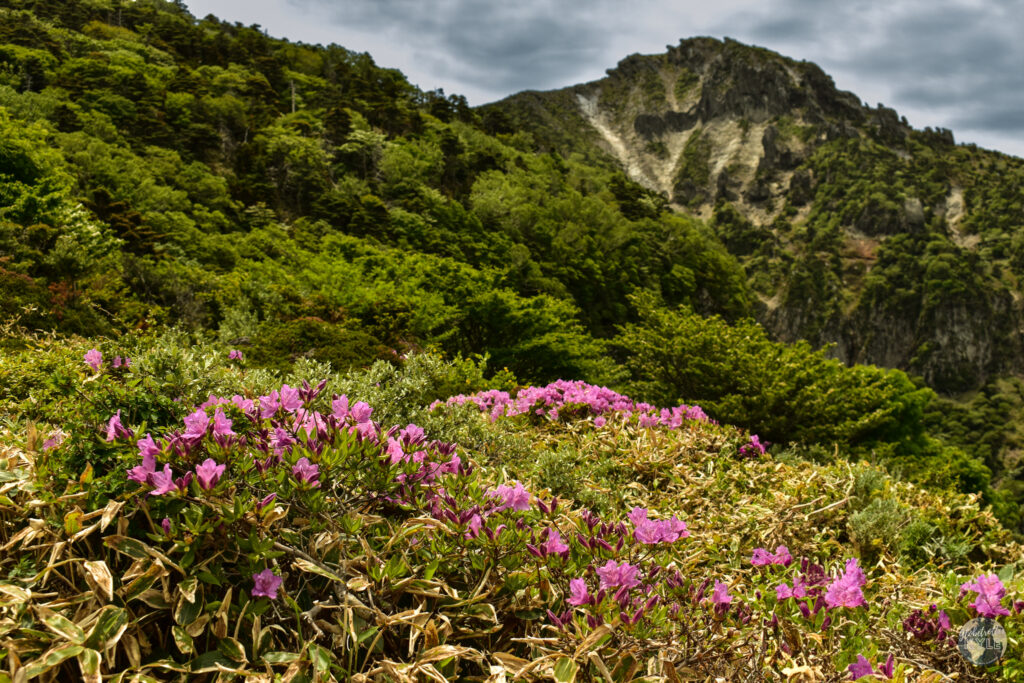
When I attempted to summit Hallasan in the winter, snow and ice stopped me in my tracks. I was only able to reach the Samgakbong Shelter before being forced to turn around. However, when I revisited Jeju in the summer, I did so with unfinished business and this time, I made it to the top!
It’s crucial that you make a reservation to hike Mt Hallasan; you can do that by clicking here!
I was so hellbent on climbing the tallest mountain in South Korea that I flew to Jeju with only a few weeks left on my 365 assignment to Osan Air Base. I was scheduled to PCS to Germany in June, and I knew my window of opportunity was closing fast. So, without hesitation, I booked a roundtrip ticket to Jeju over Memorial Day Weekend with one goal: summit Mt Hallasan.
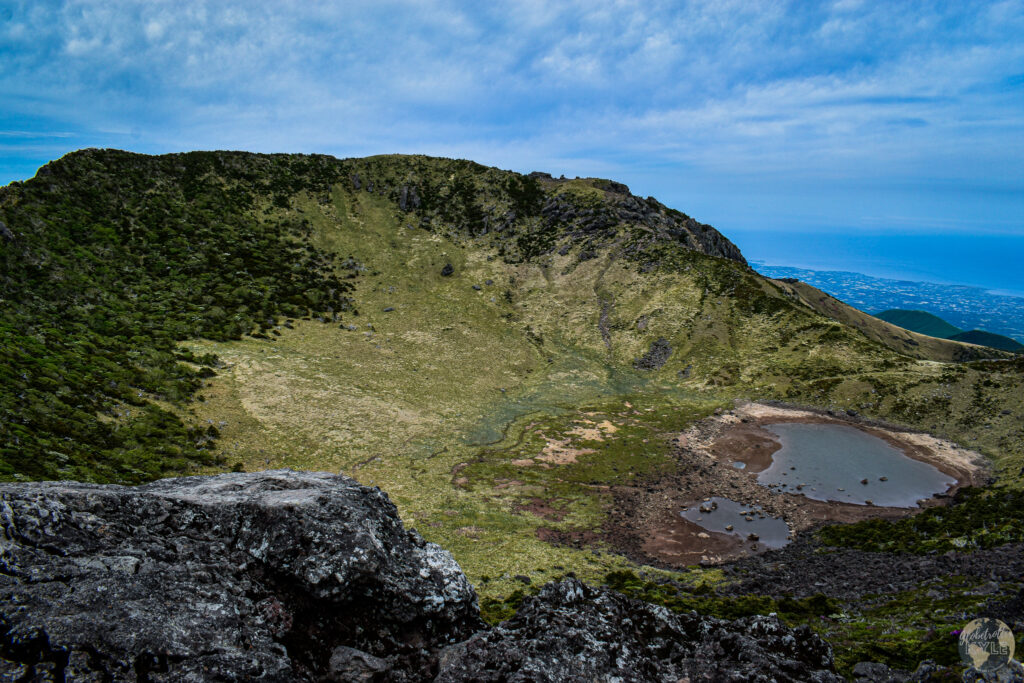
If you didn’t know, Mt Hallsan is South Korea’s tallest mountain, standing 1,947 meters tall and dominating the island’s center. Call it a weird badge of honor, but climbing to a country’s highest point was a bucket list item for some reason. Starting early in the morning, I took the Seongpanak Trail, a steady 9.6 km climb through shaded forest paths and volcanic rock steps. Summer wildflowers poked through the greenery, and the mist broke just in time to reveal breathtaking views over Jeju’s rolling hills and coastline.
Reaching the summit at Baengnokdam Crater felt like walking on another planet—a vast, sunken bowl surrounded by jagged ridgelines, with clouds swirling just below. After a quiet lunch at the top, I descended via the Gwaneumsa Trail, which I would do again if I had the chance. Sure it’s steeper and more rugged, but it’s also much more dramatic! Winding past lava tubes and deep valleys felt like something out of Jurassic Park. The round trip took about 7.5 hours, and I’d do it again in a heartbeat. This is a must for anyone asking what to do on Jeju Island in summer.
2. Visit Seongsan Ilchulbong at Sunrise

Seongsan Ilchulbong offers some of the best photography on Jeju Island. This is because there really isn’t a bad view of this amazing attraction! This UNESCO-listed tuff cone is famous for its sunrise views, and yes, it’s worth the 0430 wake-up call. In the summer, the early light casts golden rays over the sea and the fields of green that ripple all the way to the ocean. For an added bonus, consider hiking to the top of Seongsan Ilchulbong once you’re done soaking in the views from below!
The hike to the top is short but steep—about 20 minutes—but the view is unbeatable. Fishing boats bob on the water below, and the air smells faintly of salt and wet grass. After I descended, I wandered down a nearby staircase to the beach and caught a haenyeo (female diver) performance. These women are well into their sixties or seventies and dive without oxygen tanks, emerging with baskets full of fresh sea urchins and abalone. It’s truly amazing! Their strength and skill are mind-blowing. If you’re narrowing down what to do on Jeju Island, make sure sunrise at Seongsan is high on your list.
3. Swim in Jungmun Saekdal Beach’s Clear Blue Water
Jeju’s beaches come alive in the summer, and Jungmun Saekdal is the crown jewel. The sand here is darker and coarser, but the water is clear and perfect for swimming. Unlike Hyeopjae Beach, which is also popular and stunningly turquoise, Jungmun feels more tucked away. The towering cliffs on either side and strong waves attract local surfers of all skill levels!
I spent a few hours relaxing here, alternating between the warm sun and the chilly ocean. Kids built sandcastles, couples posed for selfies near the water, and I sipped a cold Makgeolli from a beachside vendor. If you’re looking for what to do on Jeju Island during a hot summer afternoon, this is the place to be. It felt like peak summer in the best way—relaxing, warm, and just chaotic enough to keep things interesting.
4. Take a Ferry to The Southernmost Point of South Korea
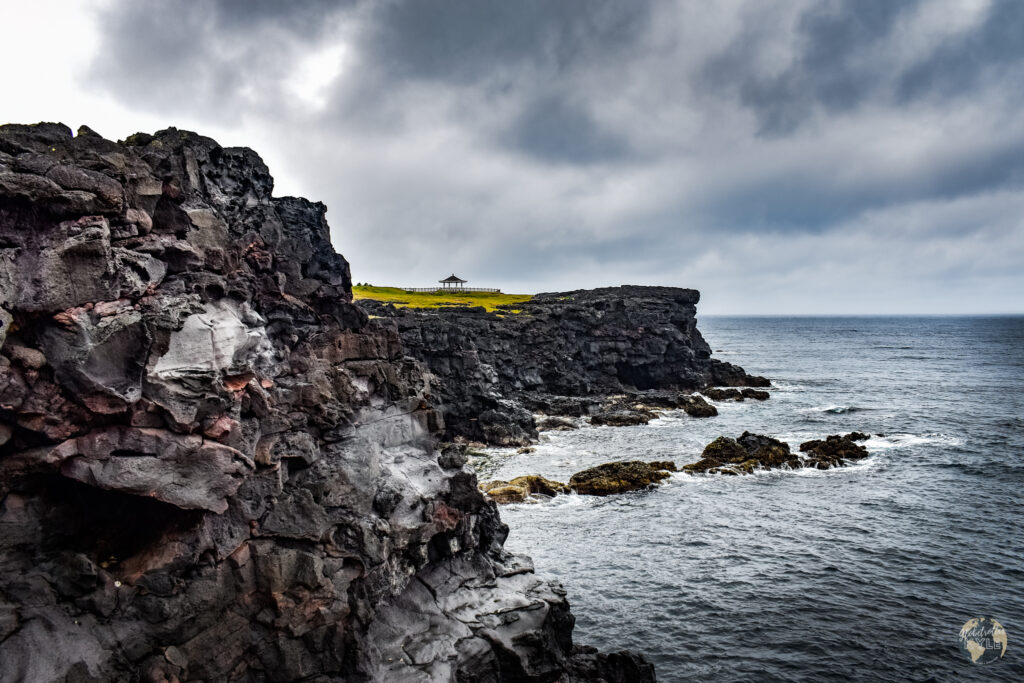
I promise you won’t find another blog that recommends something as strange as this. But trust me: this experience is well worth visiting. After checking off Jeju’s more well-known sites, I was left wondering, “there’s got to be something to do that’s off the beaten path”. That’s how I ended up visiting the southernmost point of South Korea. Spoiler: it’s not actually on Jeju!
Originally, I had planned to soak up the sun at Hyeopjae Beach. But, as the weather turned sour, I was forced to consider another option. Driving along the coast in search of inspiration, I stopped to photograph Mt. Sanbang. That’s when a curious thought struck me—just how far south could I go in South Korea? A quick search revealed that there was an island even farther south than Jeju’s tip: Marado Island.
Turns out, the Gapado-Marado Ferry Service will take you to the island of Marado, officially placing you in the southernmost part of South Korea. I bought a round trip ticket for just 21,000 won and within the hours, I was on my way!
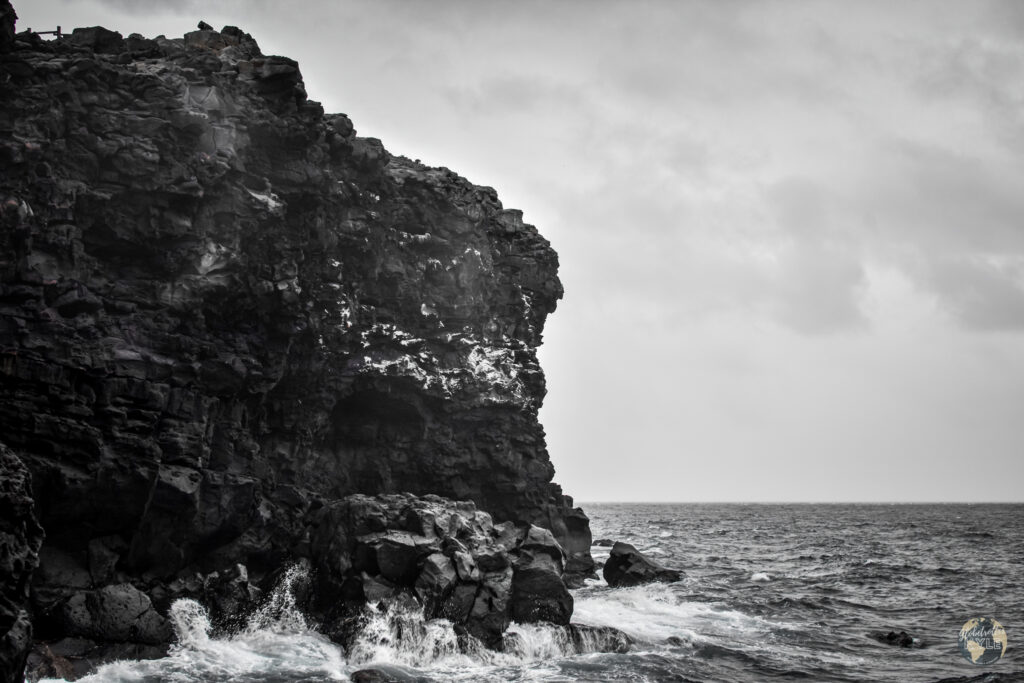
This naturally formed island had such beautiful characteristics. As we neared the dock, I was mesmerized by the towering rock pillars holding Marado above the sea, their jagged edges shaped by lava and centuries of erosion. Between the pillars were sea caves carved by relentless waves slapping against the shore—a dramatic welcome.
After stepping off the boat, I headed straight for the southern edge of the island. Afterall, I wanted to see what the southernmost point of South Korea looked like! I didn’t have high expectations, but reaching the small geological marker declaring it the southernmost point of South Korea felt oddly significant. I had now stood at both the highest and southernmost points of the country in one trip. Sure, it’s a quirky badge of honor, but it’s one I’m proud to claim.
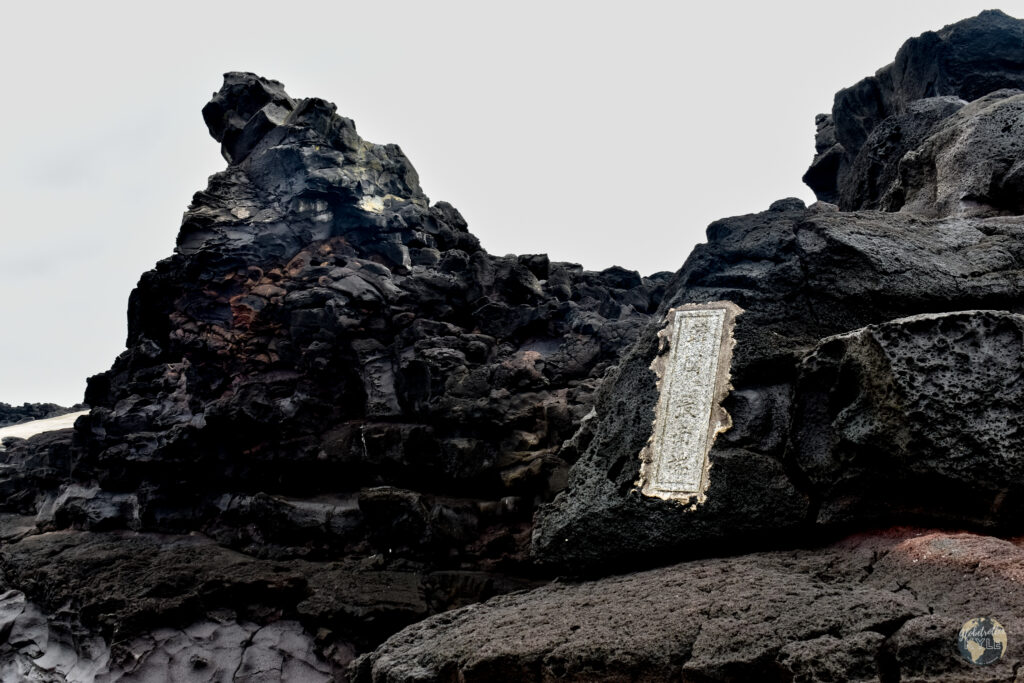
Before catching the ferry back, I explored more of the island for an hour or so—circling the Marado Lighthouse, stumbling across Janggunbawi Rock, and admiring the wind-swept views from Saladeok Pier. Before long, I boarded the ferry back to the mainland and continued on my Jeju vacation. If you’re searching for what to do on Jeju Island that’s a bit off the beaten path, Marado delivers something unique.
5. Explore Manjanggul Lava Tube: Nature’s Air Conditioner
Jeju’s underground lava tubes are cool (literally and figuratively). In the middle of a scorching afternoon, I ducked into Manjanggul Cave and instantly felt the temperature drop by at least 15 degrees. If it’s too hot to hike or you don’t feel like hitting the beach, Manjanggul Cave is your answer.
The cave stretches for over 13 km, though only about 1 km is open to the public. Walking through the tube, I couldn’t help but imagine the molten rivers that once carved out this alien tunnel beneath Jeju’s fields. It’s dimly lit, damp, and awe-inspiring, all at the same time! Formed by ancient volcanic eruptions, the walls are covered in strange textures and lava formations. Don’t miss the star of the show at the end: the tallest known lava column in the world at over 7 meters!
6. Visit Sanbanggulsa Temple and the Sanbang Mountain Grotto
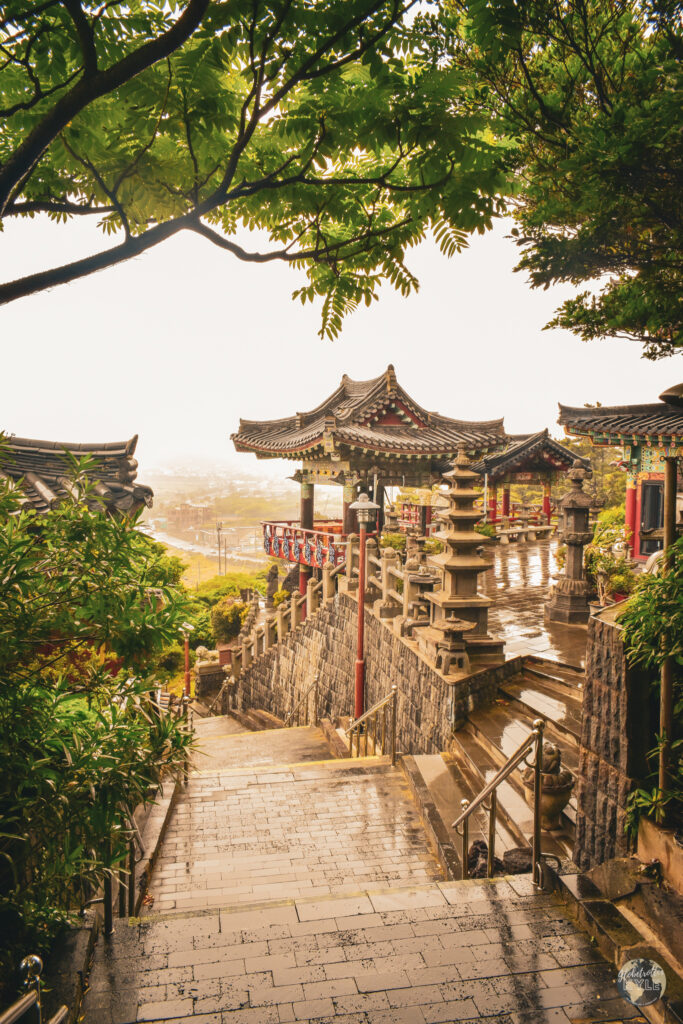
No trip to Korea is complete without experiencing at least one of its majestic temples. I chose Sanbanggulsa Temple because of its unique setting inside a rock cave. It’s also one of the top ten scenic views on Jeju Island.
According to legend, Sanbang Mountain was formed when the peak of Mt. Hallasan was torn off and thrown across the island, creating this rugged, coastal outcrop. Inside the Sanbanggulsa Grotto, there’s a statue of Buddha and a natural spring that trickles from the ceiling. This water is said to be the tears of Sanbangdeok, a mythological figure who became a goddess after enduring deep sorrow in the human world.
Outside the cave, a designated floral zone hugs the cliffside and is protected for its rare plant life. The temple grounds themselves are equally impressive. I visited on a misty day, and the drizzle added a mystical vibe to the already dramatic views over the coast. The climb up to the grotto was short but steep, but absolutely worth the effort. If you only visit one temple while deciding what to do on Jeju Island, let it be this one.
7. Pour Your Own Beer at Taphouse Stone Island

After a long day of hiking or sightseeing, sometimes all you want is a cold beer and a place to relax. Taphouse Stone Island on the western edge of Jeju City quickly became my favorite place to unwind on Jeju Island.
The interior is full of character; green plants growing everywhere to give the space a fresh, lively feel. But, most importantly, they offer over 20 different tap beers. The coolest part? You pour them yourself! You can sample as many as you like and only pay for what you pour. A great option if you’re curious to try a variety of styles.
They also serve up some delicious pizzas with quality toppings. This makes Stone Island a great casual hangout spot whether you’re traveling solo or with friends. If you want to chill somewhere local and fun, then Taphouse Stone Island is a must.
Final Thoughts: Summer in Jeju Is a Vibe All Its Own
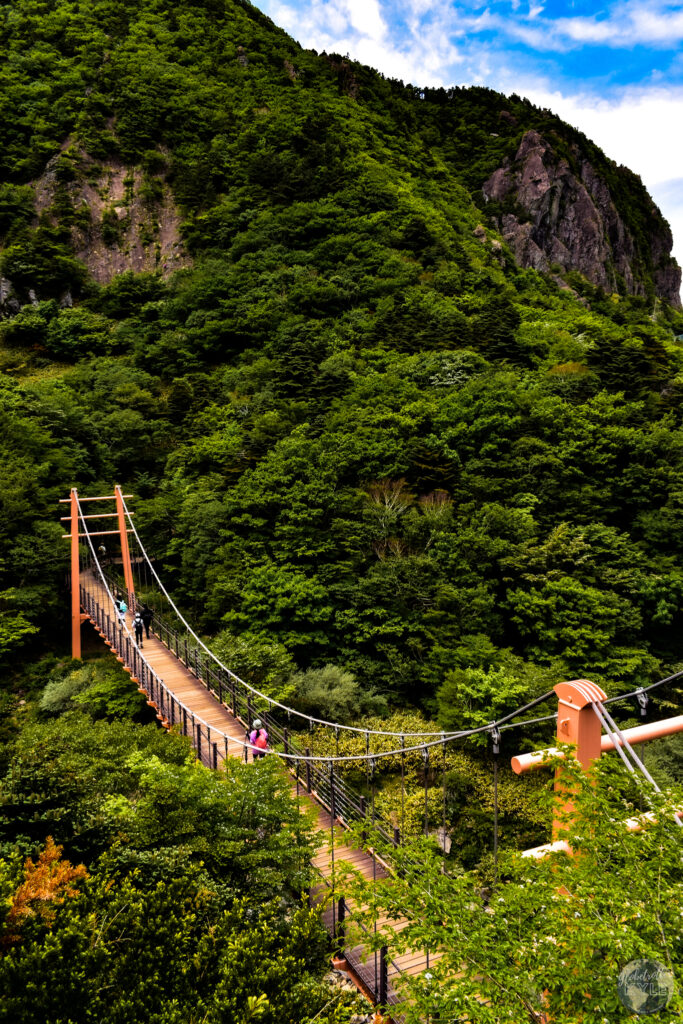
Winter may have its magic, but summer on Jeju Island is all about vibrancy. The island pulses with energy—whether you’re climbing a mountain, swimming in the sea, or standing under a crashing waterfall. So, what to do on Jeju Island to make the most of it all? Hike, swim, explore, eat, and breathe in every second of that summer buzz before returning to Osan or Humphreys.
If you do decide to visit, I highly recommend renting a car. Public transit is decent, and it’s how I got to the Hallasan trailhead, but driving gives you much more freedom. Also, I highly recommend booking your accommodations early. Summer is peak season, and for good reason.
I’m grateful I got to experience both sides of Jeju. The quiet stillness of winter showed me its soul, and the summer showed me its heartbeat.
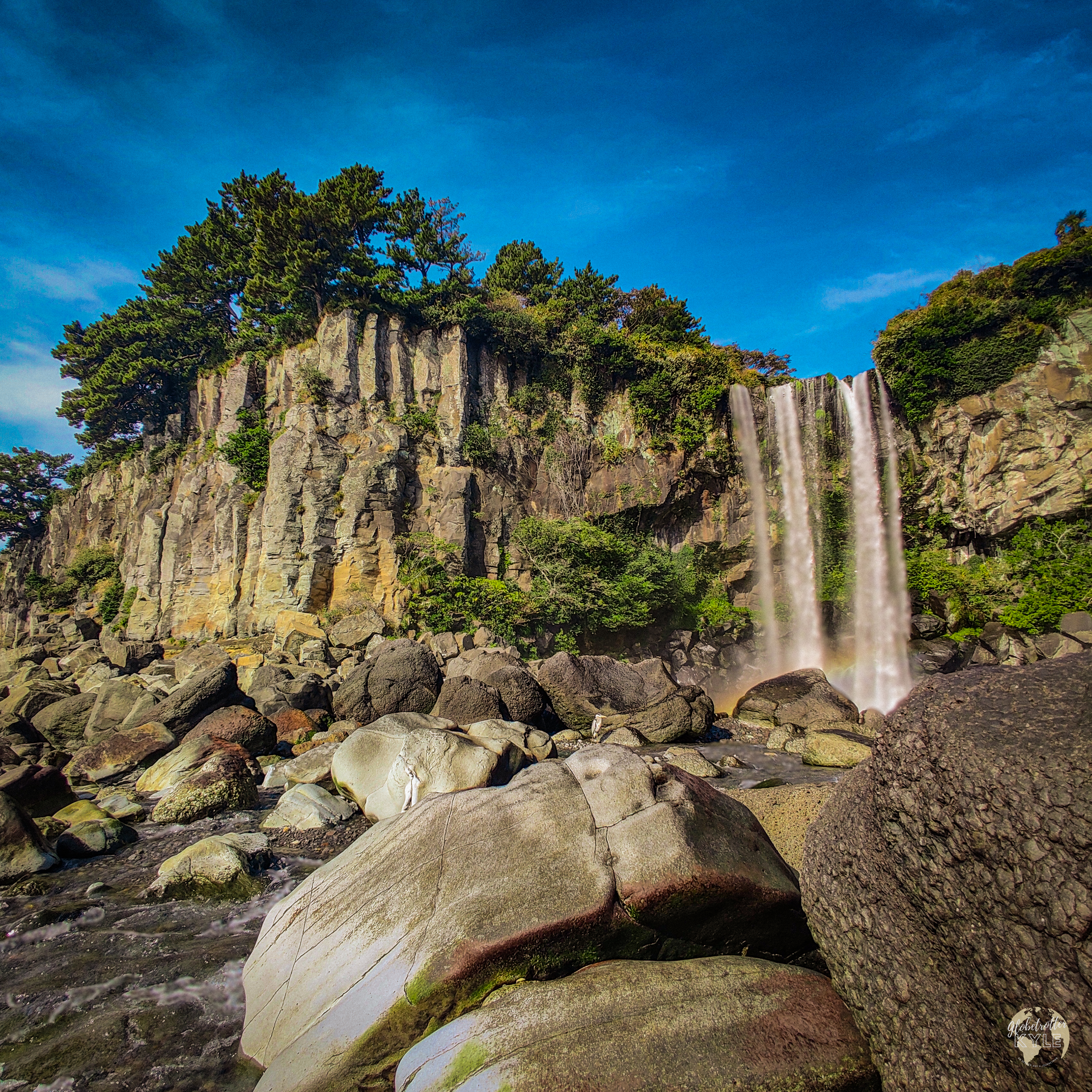
Wherever you start, just make sure you end up here. What you do on Jeju Island may depend on your style of travel, but trust me that Jeju has something for everyone. It’s the kind of place that stays with you—no matter the season.

